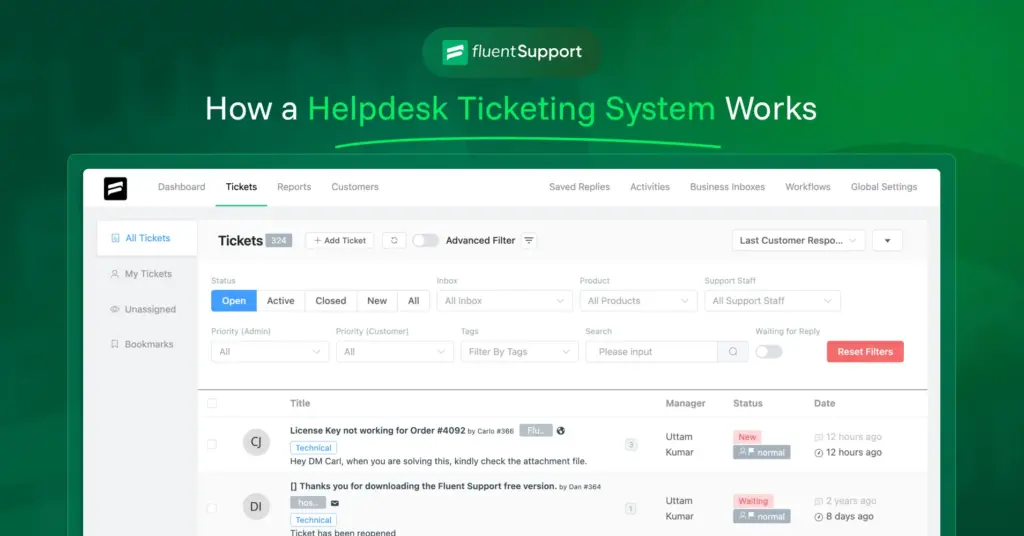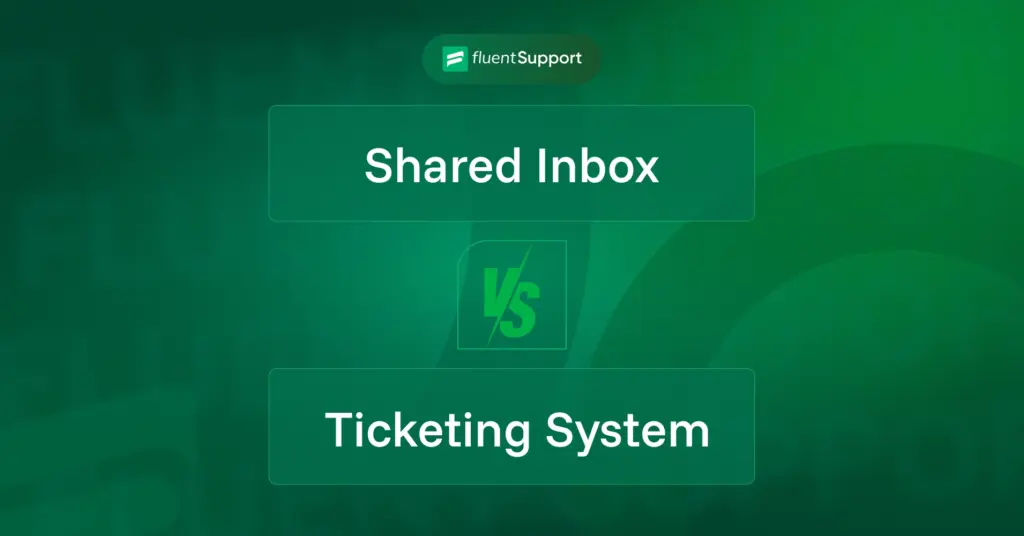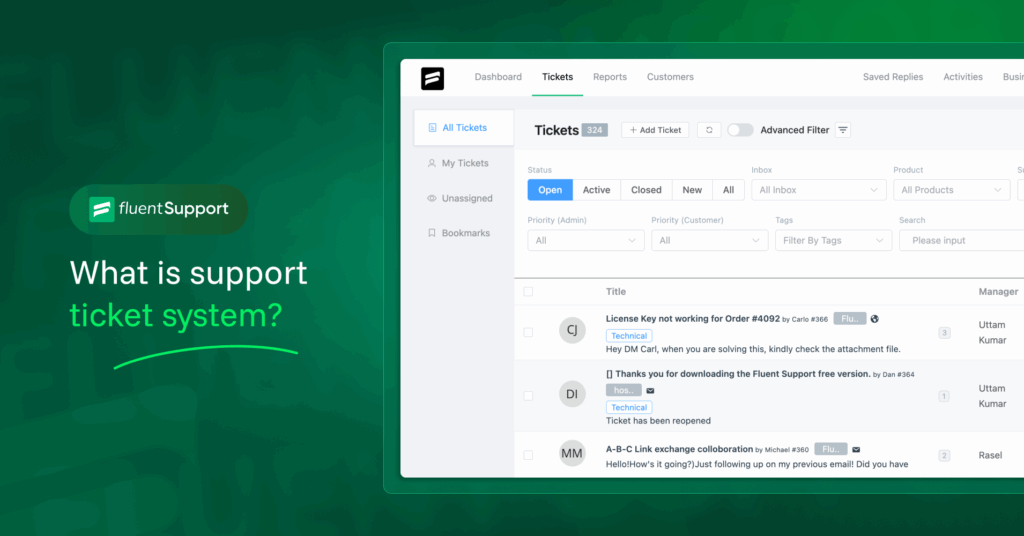
What is Customer Focus: 5 Customer-Focused Brands in 2025!
By Rasel Siddiqe
June 20, 2022
Last Modified: February 20, 2025
The only thing changing faster than business strategies are the customer expectations that drive them. In this cutthroat era, having a customer focused business strategy is a clear edge you can have over your competitors. This is a fact supported by numerous studies over the years.
Take for instance the fact that 8-out-of-10 customers will take their business elsewhere after more than one bad service experience. That being said, it’s probably the best way to improve your business’s performance without investing heavily in resources. Mostly because customer focus is not much of a process but rather a culture.
In this article, we’ll be looking at what customer focus means for businesses, why you should implement customer focus business strategies, and examples of companies having the most effective customer focus mindsets.
What does customer focus mean?
In broad terms, customer-focus means prioritizing customers above all else.
It’s a strategy where companies consider the customer’s perspective as the driving force for improvement and expansion. Starting from product development to the operational model, to be a customer focused business, companies need to evaluate customers’ expectations and feedback.
From there they need to properly align their business strategy to reflect this culture through changes and policies. Among the strategies a business can implement to improve revenue, customer focus is by far the simplest and easiest but also the most effective.
Why is customer focus important?
But how does customer focus make such a difference? By improving crucial aspects of the business. The whole point of being customer focused is to give the best service experience according to your customer’s needs. While being customer focused doesn’t turn your business into an excellent one overnight, it does let you improve with your customers guiding the way. As for tangible improvements, a customer focused business strategy offers
Better engagement
Being customer focused means you have to constantly engage with your customers to assess how they are viewing your business. Customer perception is a crucial factor for a successful business and smoother engagements allow you to shape that perception. This improved engagement shows your customers you care about their opinions and that reinforces the positive experience you want to offer further.
Loyalty and retention
As the engagements improve and your customers feel valued, it contributes to gaining loyalty and even advocacy. Selling a good product might not always get undisputed loyalty from your customers, but seamless engagement and focusing on customers‘ needs certainly will.
Loyal customers are way easier to sell to which improves your retention rates as well. When a customer feels valued they tend to go out of their way to stick to a brand. This is the most crucial because retention not only reduces churn rate, it reduces the pressure of acquisition too.
Increased revenue
Better retention rates and loyal, well-engaged customers are the backbones of a successful revenue stream. When you implement customer focus for your business you passively boost your revenue with the least amount of investment.
That is to say, without spending dollars on fancy features that may or may not help, you can offer exactly what customers are expecting. Nothing else can improve your revenues at this rate.
How to develop a customer-focused business strategy
So what can a business do to take a customer focused approach? As we’ve said before, customer focus is more of a culture rather than one single strategy. Customers come in all shapes and sizes. It’s important to take into account the types of customers that come to your business to create a uniform culture.
What’s even more important is creating a customer profile to accurately address your customers. Only after knowing for sure how your customer pool is can you implement strategies to develop customer focus
Company culture
The first step to developing a customer focused business strategy is to develop the culture. How you are going to treat customers’ needs largely depends on your mindset. To make the most from customer focus you need a culture that cultivates valuing the customers and their opinions. Developing this culture also brings your employees to work together to achieve a common goal. Ideally, for most businesses that’s customer satisfaction. Having this unified goal also boosts employee morale which translates into emphatic conversations.
Training staff
There is no better team to convey your customer focused culture than your support team. Unlike developers and managers, customer support representatives communicate a lot more with customers. Some even consider it as the gateway to a customer focused culture. For this reason, it’s very crucial to train your customer service team to value customers and everything they have to say. The only way to ensure this uniformly throughout the team is to provide training and refresher courses. Including ideas like proactive support can significantly improve the output you expect from your support agents.
Gather feedback
Customer focus is all about implementing and addressing your customer needs. The best way to find shortcomings and improve on them is to gather customer feedback. It’s crucial to remember that customers are the ones who need to love your product. So it’s crucial to keep an open mind to what your customers are telling you.
Gather as much feedback as possible and carefully evaluate where the problems are in your service. Even if you can’t fix everything right away, you can still provide temporary solutions and shape your future plans to solve these problems. Nothing shouts being customer focused more than acknowledging customer feedback and acting on it.
Find, store and access customer feedbacks
all in one system.
Track metrics
The other crucial step to becoming customer focused is monitoring key performance metrics for your business. Especially ones that are directly related to customer growth and satisfaction. We’ve talked in-depth about the key metrics you need to follow for evaluating your service. The most effective metrics to follow are,
- CSAT; Customer satisfaction scores tell you how happy your customers are. A high CSAT is good, but a low one can tell you where you need to improve more accurately.
- NPS; Net promoter scores tell you how willing your customers are to recommend your brand. This also correlates to CSAT and is very effective.
- LTV; Customer lifetime value is how you know the potential value of a customer over the period they are most likely to do business with you. This likelihood is what drives retention and reduces your churn rate.
- CCR; Churn rate tells you how many of your paying customers are leaving your business. A high churn rate usually means low satisfaction scores.
- CRR; Retention rates tell you how many of your customers are staying with your business over the years. A high retention rate can significantly help your business grow in the long run
Track all these metrics to have a clear picture of customers’ perceptions. This can dramatically help you improve certain aspects of your business, such as support efforts, creative output, and better product designs and resources.
Right Tools
Speaking of resources it’s crucial to enable your teams with tools that make it easy to focus on customers. This includes customer support desks that provide detailed reports, instant notifications, an AI-powered knowledge base, automation, and saved responses. These tools not only help your agents, but they also let the customers get in touch with you with ease.
These tools should also provide detailed reports so that you can evaluate the effort and success of your service and support team. Without them, implementing and tracking a customer focus approach can be very difficult if not impossible.
Omnichannel
A key feature that your support team should have regarding tools is omnichannel presence. To make your business customer focused, your customers should be able to contact you easily. Any sort of difficulty they face when they need to reach you is a drawback for your whole business.
To keep things easy and flowing you should be available wherever your customers might look for you. An omnichannel strategy is the only way to ensure this. Whether it be emails, chat, or social media, your customer support agents need to be present everywhere and have a keen ear open for your customers.
5 major brands with an awesome customer focused business strategy
Examples always help with explaining stuff so here are 10 brands in different industries that are truly customer-focused. We’ve picked each vendor from major industries from retail to tech.
Wegmans
Wegmans is achieving customer focus by investing in their retail personnel. They focus on how they sell products rather than putting all their effort into the product itself. This is reflected in their $5mil investment in improving the retail experience in their shops.
Chase
Chase has reinvented their strategy towards a more customer focused approach with its motto “Chase what matters”. For them what matters is their customers. As Ryan McInerney, head of marketing for Chase’s Consumer Bank puts it – “Our customers’ everyday financial lives are changing….. our new brand focus reiterates our commitment to keep pace with our customers and deliver benefits that can make both an immediate and long-term impact on their lives.”
Kaiser Permanente
Kaiser Permanente is using customer focus to bring design and technology together to transform how members experience in-person care. They are also providing more ways for members to engage digitally. As put by Kaiser CIO Richard Daniels, “These pieces come together to form a connected, end-to-end experience that improves consumers’ health as well as the cost and quality of healthcare.”
Slack
Slack approaches everything with a customer focused mindset when it comes to development and service. Customer feedback and concerns have been their priority from the beginning. Instead of looking at profit margins, Slack has been driven by customer-facing metrics, mainly, NPS and CES to improve their service and enable customers to use it effectively.
Google’s customer focus is unrivaled in the tech world. Their motto “Focus on the user and all else will follow” carries the whole gist of their operations. Google’s (the search engine) model depends highly on giving customers the fastest results possible. This is why they pay close attention to user behaviors and calibrate their algorithm based on those behaviors.
Wrapping Up
From these examples, it’s pretty clear that industry leaders get to their peak by prioritizing customer focus above all else. Customer focus although not directly has a significant impact on your company’s bottom line. That being said, having a customer focused business strategy entails not only more profit but also a more productive and healthy environment.
Giving your employees a common goal can be the secret spice missing from your business strategy. No other goal can be more grounded than wanting to help customers and creating experiences that enforce your company values. Develop the culture, train your staff and provide them the resources to prioritize customer needs, your customers will love you for it.
Start off with a powerful ticketing system that delivers smooth collaboration right out of the box.












Leave a Reply